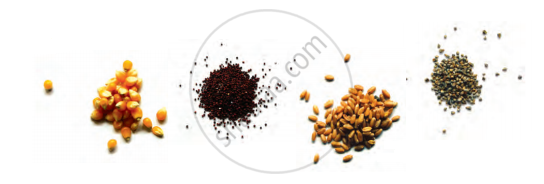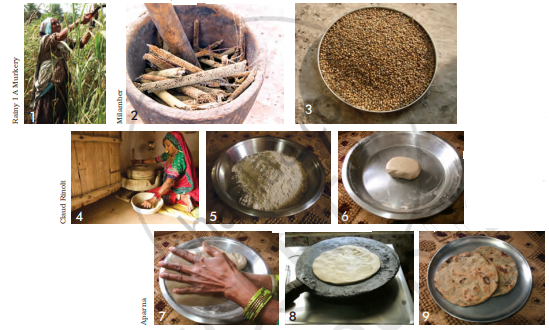Advertisements
Advertisements
प्रश्न
What questions come to your mind about farmers and farming? Write some questions in your group and ask a farmer. For example, how many crops do they grow in a year? Which crop needs how much water?
उत्तर
An example of the questionnaire is given below:
Student: Since how long you have been farming?
Farmer: I have been farming for the last 20 years.
Student: Which are the main crops you grow in your field?
Farmer: I usually grow rice and wheat.
Student: Which are the other crops you grow in your field?
Farmer: I also grow maize, mustard, and some vegetables.
Student: How do you irrigate your field?
Farmer: I use the water from the canal.
APPEARS IN
संबंधित प्रश्न
Have you eaten roti made from bajra or jowar? Did you like these?
Talk to the elders in your family and find out if there were some special foods cooked earlier that are not cooked anymore?
Can you recognize these grains?

The bajra seed saw differences in the way Damjibhai and Hasmukh did farming (for example, in irrigation, ploughing, etc). What were these differences?
What kind of progress would you like to see in your area?
What can happen to Hasmukh’s farm after some years?
Damjibhai’s son Hasmukh chose to become a farmer like his father. Hasmukh’s son Paresh is not a farmer, but a truck driver. Why would he have done so?
What can you see in each picture on the next page?
In picture 2 you can see the bajra cobs in the mortar (okhli, used for crushing). The cobs are crushed with a pestle (moosli) and the seeds are separated from the cob. You can see the separated seeds in picture 3. Now this work is also done by big machines, like threshers. We call both these different ‘technologies’ – using our hands or big machines – to crush the seeds.
What technology could have been used to cut the stem in picture 1? What do you think is being done in the grinder (chakki ) in picture 4? What ways (technologies) would have been used to do the work shown in pictures 5 and 6? You can see that the dough is ready in picture 6. When do you think a sieve (chhalni ) would have been used? Discuss each step in detail, in any language you wish to use.

There have been many changes over time, in our food. What can this mean? Use the seed story and what you know from your elders to explain.
What do you think is being done in the grinder (chakki) in picture 4?
